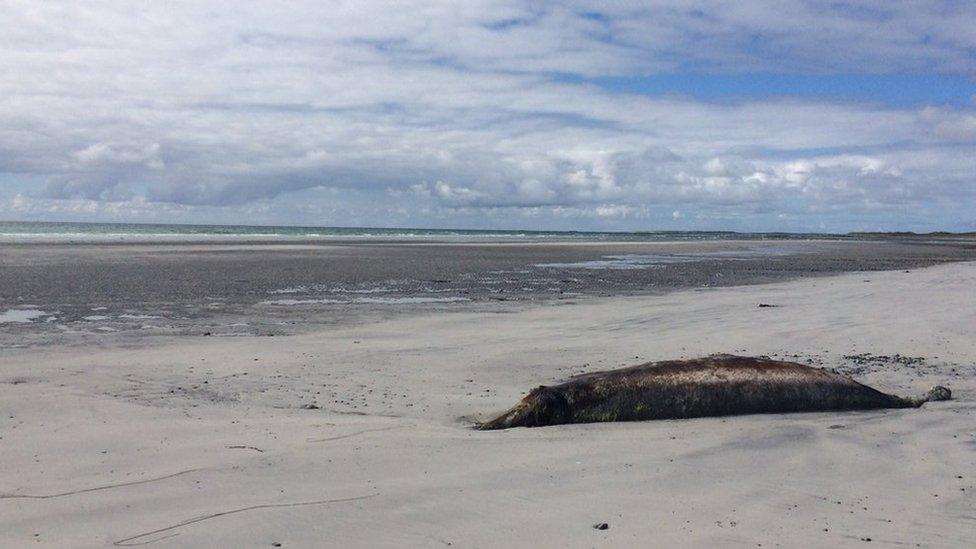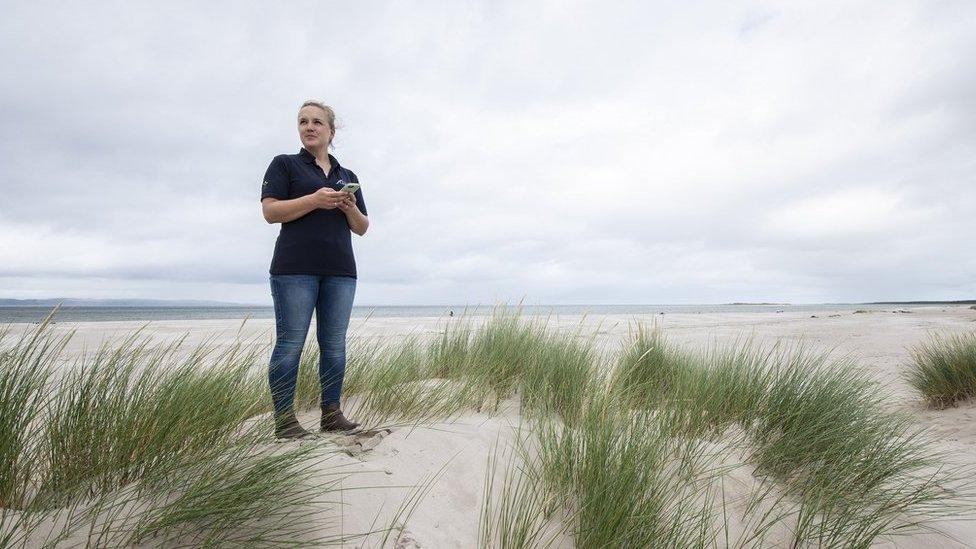New marine strandings app launched
- Published

Last year saw record numbers of strandings of large marine animals
The public is being asked to help improve the recording of marine wildlife found stranded on Scotland's beaches.
The Scottish Marine Animal Stranding Scheme (Smass) has developed a free app.
Called Beach Track, it can also be used for uploading information on pollution found on shorelines.
Inverness-based Smass investigates the strandings and deaths of large marine animals, including whales and seals.
Information gathered from the app will help to build up a 'health map' of Scotland's coastline, potentially targeting beach cleans to areas which need it most.
Ellie MacLennan, of Smass, said it was hoped to get "more eyes" on Scotland's thousands of miles of coastline to help gather more information.
She said: "This, in turn, will help all of us to better protect our seas."

The new app has been launched at the start of National Marine Week
Scottish Natural Heritage provided funding for the development of the app.
Policy and advice officer Karen Hall said: "There is still much we don't know about marine mammals and we can learn a lot by knowing where and why animals strand.
"Having an easy-to-use app will help to fill these gaps in our knowledge."
Largest recorded
Last year Smass, which has been in operation since 1992, had a record year for strandings with more than 930 cases reported.
The organisation, which is part of Scotland's Rural College, said the increase was likely to be down to an improved effort to alert it to dead or beached animals.
The strandings included almost 100 beaked whales in August and September.
This event, which involved whales stranding along Scotland's west coast and also on the shore of Ireland and Northern Ireland, was the largest of its kind ever recorded by Smass.
Most of the whales, mainly deep-diving Cuvier's beaked whales , washed up in Scotland, including in North Uist and Harris and parts of Argyll.

The Sea Watch Foundation is seeking wildlife sights for its annual whale and dolphin watch
The app has been unveiled at the start of National Marine Week.
It also comes at the Sea Watch Foundation begins its annual national whale and dolphin watch, external.
The conservation charity has been recording sightings from scientists and the public for more than 40 years.
The watch ends on 4 August.
- Published10 January 2019
